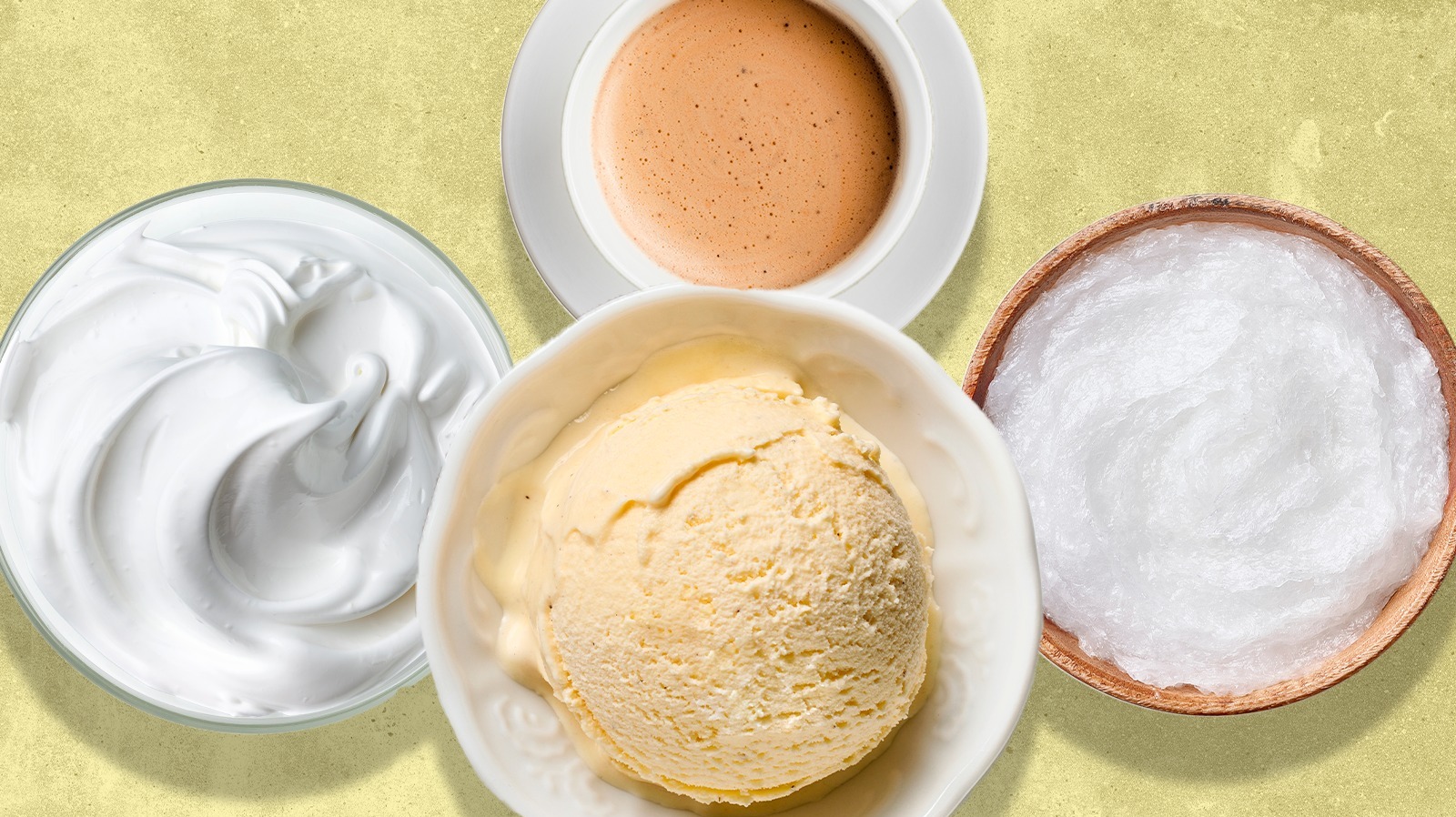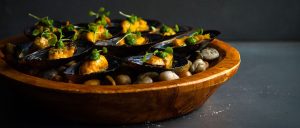A shocking amount of ice cream flavors can be found on the market, ranging from classic cookies and cream to cartons packed with sweet and salty chunks. Yet it always seems that when you are looking for a particular flavor combination, you can’t find it.
While I was working as a line cook in a bustling New York City restaurant, the pastry department (literally) churned out fresh ice cream and sorbet almost daily in deeply flavored varieties that you can’t grab at your local supermarket, like basil or crème fraîche. I carried those taste memories with me to the next stop in my career as a recipe developer, and discovered, through trial and error, that when you can’t find the ice cream flavor you want, you can make it.
In my 20 years as a recipe developer, I have also learned that you need to take shortcuts sometimes. With high-quality vanilla ice cream readily available, rather than confecting elevated homemade ice cream, you can achieve wondrous results by mixing, swirling, layering, and folding other elements into a container of store-bought vanilla ice cream. I’m not talking about taking a few scoops and building upgraded ice cream sundaes (delicious as that is), but instead giving the vanilla base a total transformation into something completely different and utterly delightful. Truthfully, there were some failures over the years, but each icy, bland result was part of the learning process that turned failure into success, and now I’m passing that experience along.
Add fruit, but cook it first
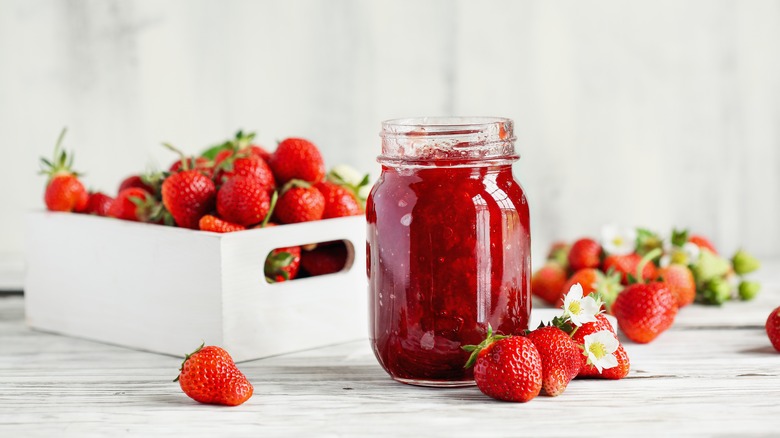
Fresh fruit is an obvious choice for combining with vanilla ice cream, since flavors like strawberry, peach, raspberry, and cherry already fill the freezer case. While you can top ice cream with fruit and eat it immediately, to fully infuse a whole container, you have to cook the fruit.
Cooking fresh fruit before adding it to ice cream is vital for imparting the best texture and flavor. Texturally, water is the enemy in ice cream, as water freezes into ice, and fresh fruit is mostly water. If you freeze raw fruit, the water inside the fruit freezes, causing it to taste bland and have a hard, unappealing texture. Cooking the fruit first allows some of the water to release and evaporate. Additionally, cooking the fruit concentrates the flavor. The low temperatures of cold foods impact our taste buds, which is why melted ice cream or room-temperature soda tastes much sweeter than when frozen or thoroughly chilled. To distribute big fruit flavors through vanilla ice cream, you need the fruit flavor to be strong and intense.
Before adding it to ice cream, the cooked fruit should be completely cooled or even chilled. Then, beat it into softened vanilla ice cream for a blended variety, or drop dollops into a bowl of softened ice cream and lightly mash it all together before refreezing until firm.
Use coconut oil for the best homemade chocolate chips
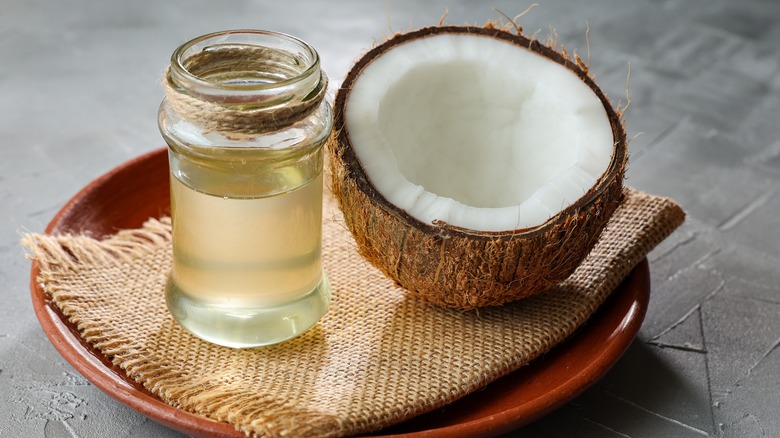
Chocolate chips, fudge flakes, or chocolate shards — no matter the name, the combination of firm chocolate and smooth vanilla ice cream is always a winner. But there is nothing worse than a pint of chocolate chip ice cream that skimps on the chocolate, and dumping a bag of chocolate chips into ice cream and refreezing isn’t the solution. Similar to fruit, there is a difference between what works as an ice cream topping and how best to flavor ice cream.
The key ingredient for homemade magic shell ice cream topper — the delightful dessert sauce that hardens almost instantly on ice cream — has been an open secret for a while: coconut oil. Melting chocolate with coconut oil turns hard, snappy chocolate into a pourable sauce that forms a thin layer, freezes quickly, and can be broken into chips of all sizes.
For the most chip-rich treat, spread softened ice cream in a large bowl and drizzle it with the homemade shell. Once the shell sets, stir to break the layer of hardened sauce into bits of whatever size you like. Repeat the process for more chips, or return to the freezer to harden the entire confection.
Toast nuts before mixing them into store-bought vanilla ice cream
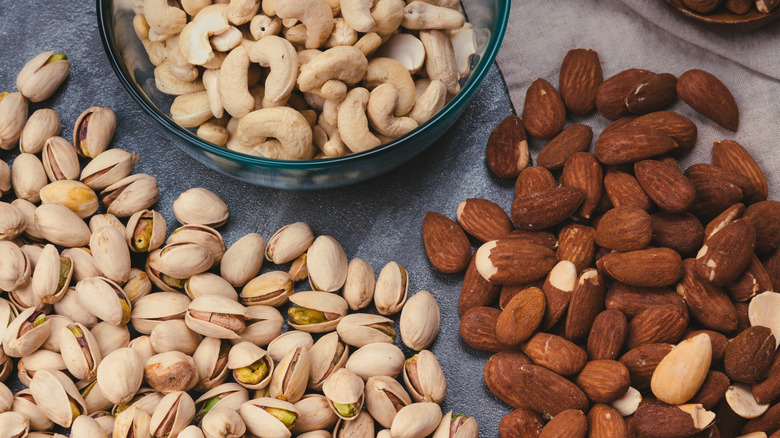
Pecans, walnuts, almonds, peanuts, and pistachios add flavor and texture to ice cream, but part of the textural pleasure comes from the nuts retaining crunch — and introducing them to something wet, like ice cream, can lead to soggy, mealy nuts. Toasting nuts before mixing them into vanilla ice cream deepens their flavor and ensures they stay crunchy.
Toasting nuts draws out their moisture, which makes them crunchier. It also deepens their color and flavor. To go even one step further, you can amplify the flavor of any nut by toasting it in its own oil. The best way to toast nuts is in the oven instead of in a pan on the stovetop, as the heat is more even and uniform. It’s also better to toast nuts whole because the bigger pieces are less likely to burn, and burnt nut is not a flavor you want to add to anything, let alone ice cream.
Once the nuts cool, chop them as finely as you like, even grinding them into small pieces in a food processor. The smaller the pieces, the more they will disperse into the ice cream, giving each bite more nut flavor.
Use instant espresso for bold coffee flavor
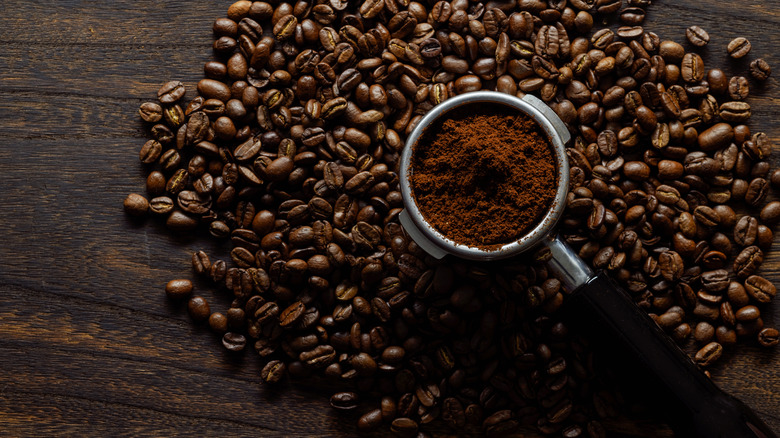
Aska/Getty Images
Italy’s beloved affogato is a dessert and a pick-me-up made from hot espresso and cold gelato, which is the best vanilla ice cream for affogato. The hot espresso melts the gelato just a touch, resulting in a powerful coffee-flavored creamy treat. However, that does not mean you can make coffee-flavored ice cream by mixing up that affogato and putting it back in the freezer — although espresso is still vital to the actual process.
The best way to turn vanilla ice cream into a coffee-flavored dessert is to avoid anything water-based, like brewed coffee, and instead turn to a dry concentrated ingredient like instant espresso powder. Instant espresso powder is very finely ground and dissolves easily. It has an intense coffee flavor with a little bitterness, which is essential to cut through rich dairy.
To best infuse ice cream, mix the espresso powder with just enough heavy cream to make a thick paste, and then thoroughly mix it into softened vanilla ice cream. The fat in the cream will help it blend in and minimize ice crystals from forming. You could also melt a few tablespoons of ice cream for dissolving the powder if you don’t have any heavy cream, or substitute espresso powder with instant coffee, but the final flavor will be more subtle.
Keep candy or cookie pieces bite size
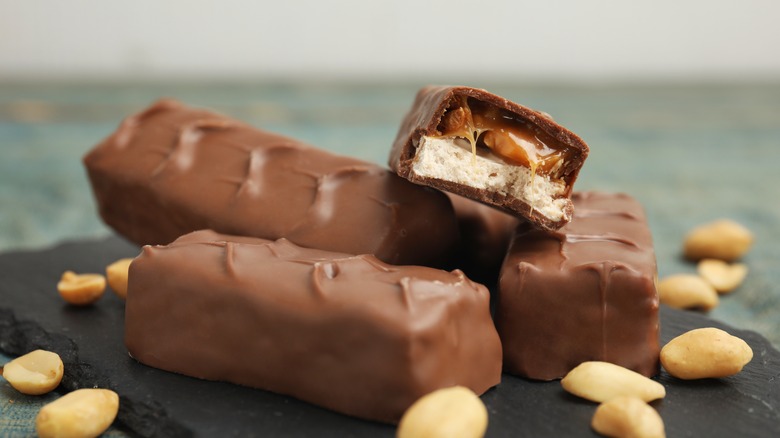
This isn’t exactly shocking information, but freezing things makes them hard. Sometimes, it makes them too hard to enjoy right out of the freezer. If you want to chop candy bars or thick, sturdy cookies, remember that bigger isn’t always better, and certain textures work better once frozen than others.
Candy bars with thick, chewy caramel will become hard once frozen, so this is a great time to consider a caramel candy with a softer filling. Hard toffee will retain the crunch, but it will be hard to work through a large piece, so blitzing it in the food processor or chopping it well will make for a more pleasurable eating experience. Anything with a candy coating is a double whammy because the shell and the interior will firm up, so chopping these is best.
For cookies, thin, crisp cookies work better because the chewy texture of a soft-baked cookie will either become soggy in the ice cream and dissolve, or freeze too hard to enjoy. If you aren’t sure how your intended mix-ins will be once frozen, test out a few pieces by themselves in the freezer first. Ultimately, it’s up to you, but to disperse the mix-ins better and protect your teeth, keep the bites small. You can always top your doctored ice cream with something that isn’t a successful frozen addition.
Layer the mix-ins, don’t swirl
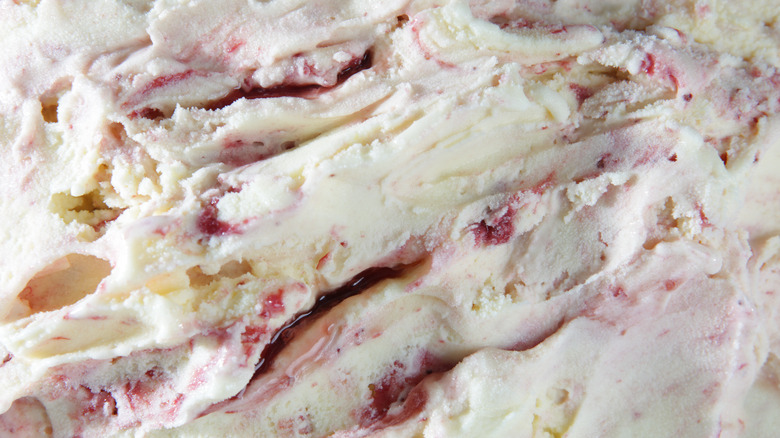
One of the biggest revelations I discovered when developing ice cream recipes was that the best way to thread vanilla ice cream with thick ribbons of jam and big chunks of cookies or cake turned out to be the method involving the least amount of work. I watched a video of my local ice cream shop creating a bucket of one of their signature flavors, and it all clicked.
As the ice cream flowed from the machine to the container, the confectioner sprinkled in handfuls of chopped cookies and streamed in sauce, letting the flavors build into the ice cream on their own instead of trying to force them together. Then, as she scooped, she pulled through all the layers, letting every serving shine with the different flavors. This was the technique I had been seeking, as manually trying to stir everything together either created weak, hard-to-see streaks, or one uniform ice cream with muddied flavors rather than sharp, separate elements.
When I tried this in a test kitchen, I scaled down the technique to a few containers of vanilla ice cream and a freezer-safe baking dish. I dropped gobs of thick sauce between layers of softened ice cream, and froze the concoction until firm. Swiping an ice cream scooper through the dish created a picture-perfect result bursting with flavor.
Work store-bought vanilla ice cream in a chilled bowl
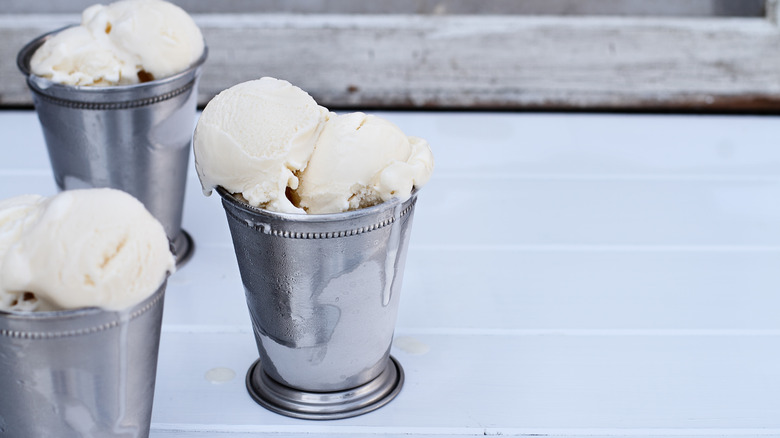
When thinking about how to flavor ice cream or incorporate chunky bits, what you add is important, but how you add is also essential. When ice cream melts, it loses the air churned into it, making it refreeze hard, dense, and icy. But you need to soften the ice cream to an extent before you can work with it. So, how can you control the speed at which the ice cream melts and preserve the texture of the ice cream you are starting with?
While you want the base ice cream to soften, use an ice cream bowl trick to keep it from melting too fast. Before you begin customizing your store-bought vanilla ice cream, put your work bowl and utensils in the freezer to get them nice and cold. If possible, choose a metal bowl; it will get colder faster than thicker glass or plastic, and retain the chill. The cold metal will prevent the edges of the ice cream from quickly melting in the bowl, while the core stays frozen. This way the ice cream will be at a more consistent, lower temperature while you’re adding mix-ins.
Get inspired by spirits, but add them wisely

Beating in a few splashes of alcohol can take store-bought vanilla ice cream to a very sophisticated and delicious place, but look out for the biggest mistakes with making boozy ice cream. Alcoholic add-ins, maybe more than any other type, need to find the sweet spot in regards to how much and what type is used to preserve the ice cream’s texture, and to keep the harsh fire of alcohol at bay while inviting herbal, botanical, or woodsy flavor notes.
Alcohol has a lower freezing point than water, and when mixed with ice cream, alcohol can prevent the ice cream from fully refreezing, creating a half-melted consistency. Some recipes for spiked frozen treats, like a no-churn swirled piña colada sorbet, work because the alcohol keeps the ice cream at a slightly softer texture — but that is a technical choice that doesn’t work the same way with an already-churned carton of ice cream.
The key is to add alcohol in a moderate amount, and to use a boldly flavored spirit. For lower-alcohol drinks like wine or beer, you will not get the same flavor boost as a shot of something stronger, like bourbon or mezcal. Liqueurs (such as Kahlúa or limoncello) or amaros like Fernet-Branca or Amaro Montenegro add sweetness or bitterness, as well as a unique taste.
Avoid thin or runny sauces
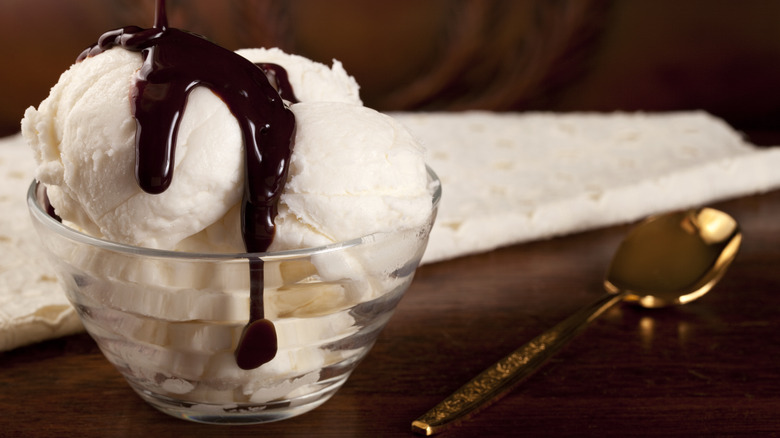
Before squeezing just any prepared sauce into your ice cream, take a moment to consider the thickness of the sauce. If the sauce is a liquidy, sugary syrup, like the ones used to flavor milk or milkshakes, it will be harder to blend with the ice cream due to the extreme differences in textures. The thin sauce will more easily slip off the ice cream and pool at the bottom of the bowl or container.
Additionally, syrups will not freeze as hard as the ice cream due to their high sugar content. High amounts of sugar in food lowers the freezing point. To avoid sticky, drippy syrups that separate from the softened ice cream, reach for thicker sauces or make your own perfect caramel sauce. Choose items in jars or cans that are labeled as sauces, instead of squeeze bottles of syrup — or consider alternate ingredients. Dulce de leche is typically thicker than caramel sauce, yet has a similar toasted-sugar taste.
Make it extra fluffy with whipped cream
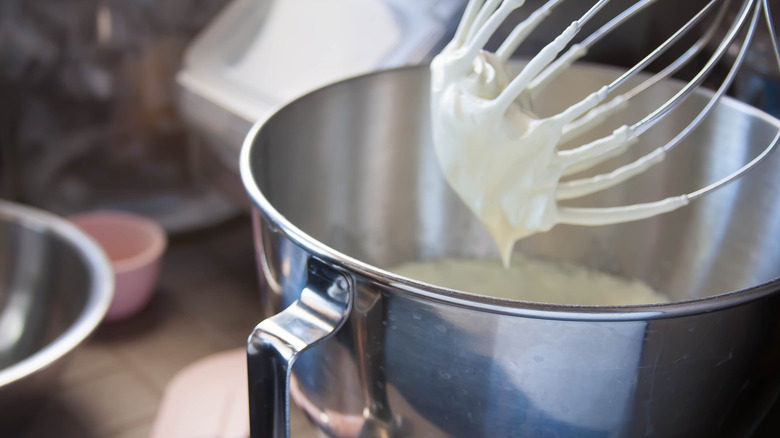
It’s super important to preserve the churned air in the store-bought vanilla ice cream base when flavoring it, but you can also lighten the texture, making it more airy and fluffy like mousse. To turn dense, rich ice cream into a light-as-air version that melts in your mouth, all you need is some heavy cream and an electric mixer.
First, take cold heavy cream and use a method of whipping cream to stiff peaks, stopping before the cream starts to clump up. Then, fold the cream into softened vanilla ice cream until blended, and refreeze. I like a ratio of a half cup of heavy cream, whipped, to 4 cups of ice cream, but you can tweak the proportions.
This method works because it has a similar process to making mousse. The light texture in mousse comes from gradually adding air from whipped cream or egg whites into a heavy base, until the two textures fuse. In this case, softened ice cream is the heavy base. Add the whipped cream in two to three batches, fully blending each batch in before adding the next, to make blending the two elements easier, and create a more stable final result.
Dissolve powders before adding to store-bought vanilla ice cream
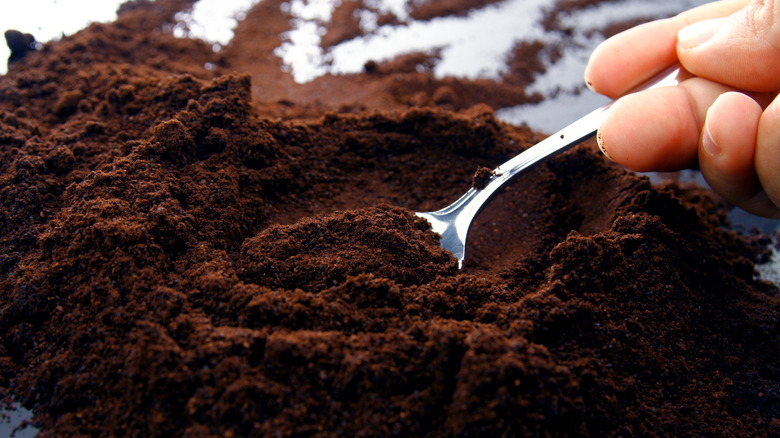
If you have ever choked on a cocoa-dusted bite of tiramisu, then you know that some powders are extremely difficult to eat in their raw form. They coat your mouth, dry your tongue, and overwhelm the taste buds. To avoid dusty or gritty ice cream, don’t add any powdery mix-ins directly to the ice cream.
Ingredients like cocoa powder or malted milk powder pack a big punch of flavor, but they won’t disperse throughout the ice cream unless they are dissolved first. To avoid needing a lot of liquid to dissolve the powders, and to ensure there is no gritty texture left behind, whisk the powder with warmed cream or heat the powder and cream together, stirring well until smooth. Let the mixture cool completely before blending it into the ice cream. These powders are not thick enough to hold a swirl, like jam or dulce de leche, so use them to flavor the entire base ice cream.
Lean into other frozen desserts
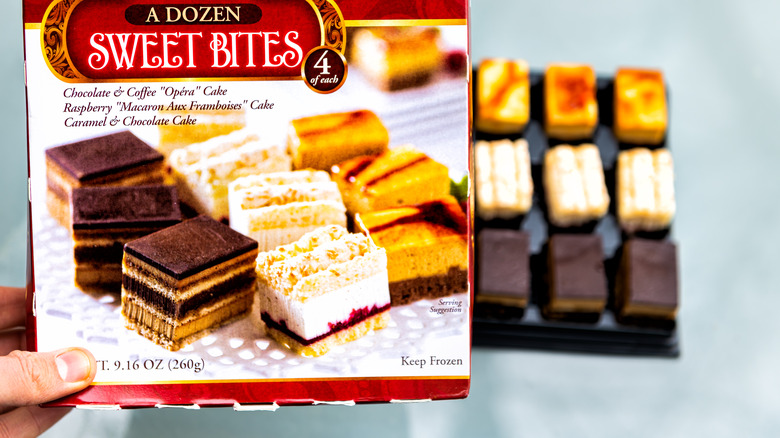
If you are looking for inspiration to create a new flavor, or are unsure how best to select flavors and mix-ins, take a hint from other cold treats at the market, especially the frozen desserts at Trader Joe’s. Delicious pies, cakes, and cookies are easy options that are fully cooked and ready to serve right from the package after thawing.
Any thaw-and-serve dessert would be a perfect choice for incorporating into ice cream. Because the treat is already frozen, you can be sure that the texture is stable and not runny or crumbly.
Pie varieties like pecan, Key lime, or chocolate mousse will be easier to cut when frozen, since the textures are softer or more delicate when thawed. The same is true for frozen macarons or cream puffs. Use a large, sturdy knife to cut the frozen dessert into small pieces (you can let it thaw for a few minutes if it’s too hard to work with) and fold it into the ice cream.
Make fried ice cream or tartufo
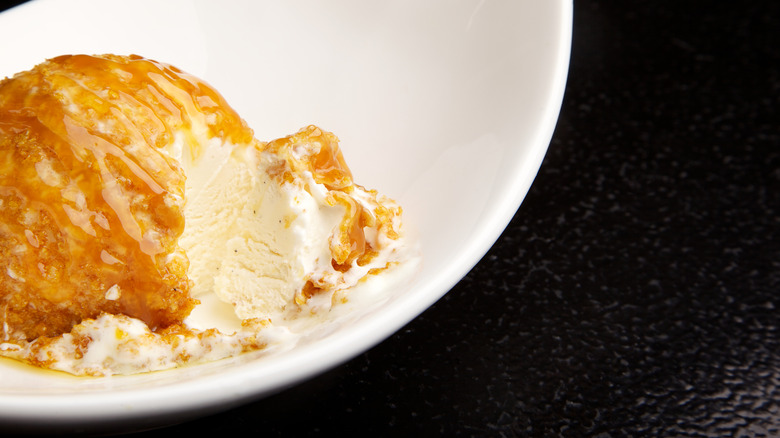
Sure, you can stir flavors into vanilla ice cream, but you can also transform it by taking it out of the container, rolling it, stuffing it, or even frying it. These treatments take something familiar and turn it into something unexpected.
Tartufo is Italy’s truffle-inspired frozen dessert that can easily be replicated at home with store-bought vanilla ice cream. Living up to its name — tartufo translates to truffle in Italian — the assembled dessert looks like the umami-rich delicacy. A scoop of ice cream or gelato is stuffed with fruit or nuts (boozy cherries are a personal favorite) and then rolled, coated, or dusted in cookie crumbs, a crisp chocolate sauce, or cocoa powder. It’s endlessly customizable but takes vanilla ice cream to a new level.
Fried ice cream sounds like a joke. How can you put something that melts easily in hot oil or an air fryer? However, by coating a scoop of ice cream, you create insulation that protects the temperature of the ice cream. The crisp exterior, toasty flavor, and contrast of hot and cold temperatures are unique and outstanding.



